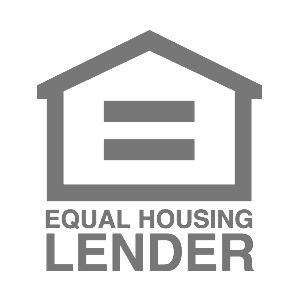
Wondering how to reduce air conditioning bills? The entrance to warmer months means you switch your thermostat from heat to A/C. Yet, this change can cause your electric bill to skyrocket. The Department of Energy (DOE) reports that air conditioners use at least 6% of all electricity in the U.S., costing homeowners a collective $29 billion every year.
Given the sweltering heat, it’s hard to avoid paying the price for running your air conditioning unit. But if you’re wondering how to lower air conditioning bills, we’ve outlined 14 practical ways to combat high costs and stay cool for the summer.
In This Article
1. Make room for fans
Fans are an optimal way to circulate extra airflow throughout your home—and reduce energy bills. If not already installed, you could place ceiling fans in a few key rooms, such as the living room, bedrooms, and your office. Wherever you’re likely to spend the majority of your time, you’ll likely lower air conditioner costs.
The kitchen is often one of the warmest rooms in the house due to the heat generated by cooking appliances. Installing a ceiling fan in the kitchen could circulate air and make the space feel cooler.
You can also buy standalone fans to offer a breeze while working from your kitchen or home office. Better yet, explore attic fans. These reduce attic temperatures (heat rises), remove moisture, and offload extra pressure on your HVAC.
2. Shut curtains, blinds, and shades
The next easy solution to reduce your air conditioning bill? Block out the sun. Close the curtains, shut the blinds, and draw the shades. By doing so, you’ll eliminate heat coming through the windows—and your air conditioner will thank you.
Lacking drapes, shutters, or curtains? Find cheap solutions in roll-up shades made of bamboo or vinyl, which are stylish and easy to install. Already have drapes or curtains? Consider lining them with lighter-colored fabric to reflect the heat or swap them with blackout curtains.
3. Close off unused rooms
If you have rooms in your home that aren’t frequently used, consider closing off the vents and doors to those rooms. This will redirect cool air to the rooms you’re using, which can help reduce your air conditioner costs.
4. Program your thermostat or install a “smarter” one
Another way to reduce your air conditioning bills is to program your thermostat. While working during the day or sleeping at night, set your A/C to 78 degrees—and avoid dropping it any lower. Running your air conditioning at extremely low temperatures is unnecessary, especially when your family is away for the day. By adjusting the temperature from seven to ten degrees for eight hours, you can shave up to 10% off your electric bill each year.
Now, for those who are more tech-savvy, choose a Wi-Fi-enabled thermostat. These will automatically adjust your home’s temperature for enhanced comfort and performance. But heads up: Search for ones with an ENERGY STAR rating, so you know they’re certified to help you save.
“Smart” thermostats, such as Nest thermostats, deliver added perks like remote access from any device, a compact design, temperature sensors for individual rooms, and free energy reports. Not to mention, smart thermostats can reduce your A/C bill by 15% on average.
5. Turn on a dehumidifier
High humidity levels can make a room feel warmer, even if the temperature is set low. By using a dehumidifier, you can remove excess moisture from the air, which will make it feel cooler and more comfortable. This can help reduce the need for air conditioning and potentially help you save on energy bills.
6. Use a programmable power strip
Many appliances and electronics continue to draw power even when turned off. By using a programmable power strip, you can automatically turn off power to these devices when they’re not in use, which can help reduce your energy bill.
7. Use natural ventilation
If you live in an area that gets cooler at night, consider opening windows and doors to let in fresh air. This can help cool your home without the need for air conditioning. However, be sure to close windows and doors when the temperature starts to rise again. That way you can trap all that cool air inside.
8. Service your A/C to reduce air conditioning bills
There are several homeownership costs that are often overlooked—and HVAC maintenance is one of them. To keep your HVAC in tip-top shape, it’s important to schedule seasonal tune-ups. Whether your system is working or not, an experienced technician can tell if any problems will arise from dirty coils, poor connections, or low refrigerant levels.
Still, there’s something you can do all on your own: Routine filter replacements. Every few months (depending on pets and the number of people in your household), switch out those filters. After all, dust can accumulate, blocking airflow and forcing your air conditioning unit to work harder to push out air.
9. Heat up the grill
Here’s another simple strategy: Avoid the stovetop and oven. Take advantage of the great outdoors and dine al fresco. You can opt for meals that center around the grill (even crock pots or electric griddles, and prep salads, side dishes, or sandwiches that can be refrigerated. By incorporating this routine a few times a week, you could reduce your air conditioning bill and rake in major savings.
10. Plant more trees
Another way to curb the heat (and add curb appeal)? Plant a few trees. But be mindful of where you place them. Grow them on the east and west sides of your home, so you’ll receive shade against the rising and setting sun. Plus, during the winter, bare branches will allow rays through to warm your home.
11. Explore solar screens
Exceptionally eco-friendly, solar screens are a green alternative to cooling your home. Install a few on your roof and on windows that get significant sunlight. Since they’re made of mesh, solar screens can effortlessly block heat and light.
You may worry whether solar screens will fit your windows. But many manufacturers offer custom designs to fit specific window styles and sizes.
12. Replace and seal windows, doors, and ducts
Own an older home? Then it’s likely your windows need to be replaced. Older windows can have cracks and poor insulation. Thus, allowing more heat in and lowering your home’s energy efficiency. While also an investment, new windows eventually pay for themselves by using less air conditioning to reduce A/C bills. And with a home renovation loan through Prosper, you get help paying for new windows.
Not only that, but poorly sealed doors and air ducts also lead to higher energy bills. According to the Environmental Protection Agency (EPA), a typical duct system can lose up to 30% of air due to leaks, holes, and poorly sealed connections.
So, while it seems a tedious task (and an extra investment), addressing these issues will go a long way to reduce those monthly bills.
13. Head to the basement (if you’ve one)
As we all know, heat rises. That means spending more time on the lower levels of your home can make a big difference. Start by moving family movie nights to the basement. Even better, set up your home office downstairs so you’re not as likely to touch the thermostat during the day. If you do, you’ll spend the summer feeling more comfortable—with more money in your wallet.
14. Get help from electric companies
Don’t forget to contact your utility company and ask how you can reduce air conditioning bills. Their website may outline unique tips on budgeting and even offer deals on “smart” thermostat installations. Plus, if eligible, your provider can lower costs or let you pay the same monthly amount, preventing large spikes in your A/C bills.
Reduce air conditioning bills and stay cool this summer
There are plenty of ways to seek refuge from summer’s sweltering temperatures. It’s only a matter of becoming more creative in your daily routine and investing in energy-saving products and services. Before summer hits, do your research and commit to a few of the above.
If you suspect outdated systems are the cause of your high energy bills—and you’re ready to upgrade—consider using a home equity line of credit (HELOC) or home equity loan (HELoan). Both can help you finance energy-efficient upgrades and other home improvements that can save you money and reduce air conditioning bills in the long run.
Written by Cassidy Horton | Edited by Rose Wheeler
Cassidy Horton is a finance writer who’s passionate about helping people find financial freedom. With an MBA and a bachelor’s in public relations, her work has been published over a thousand times online by finance brands like Forbes Advisor, The Balance, PayPal, and more. Cassidy is also the founder of Money Hungry Freelancers, a platform that helps freelancers ditch their financial stress.
All personal loans made by WebBank.
Eligibility for a home equity loan or HELOC up to the maximum amount shown depends on the information provided in the home equity application. Depending on the lender, loans above $250,000 may require an in-home appraisal and title insurance. Depending on the lender, HELOC borrowers must take an initial draw of the greater of $50,000 or 50% of the total line amount at closing, except in Texas, where the minimum initial draw at closing is $60,000; subsequent HELOC draws are prohibited during the first 90 days following closing; after the first 90 days following closing, subsequent HELOC draws must be $1,000, or more, except in Texas, where the minimum subsequent draw amount is $4,000.
The amount of time it takes to get funds varies. It is measured from the time the lender receives all documents requested from the applicant and depends on the time it takes to verify information provided in the application. The time period calculation to get funds is based on the first 4 months of 2023 loan fundings, assumes the funds are wired, excludes weekends, and excludes the government-mandated disclosure waiting period.
For Texas home equity products through Prosper, funds cannot be used to pay (in part or in full) non-homestead debt at account opening.
Depending on the lender, qualified home equity applicants may borrow up to 80% – 95% of their primary home’s value and up to 80% – 90% of the value of a second home. In Texas, qualified applicants may borrow up to 80% of their home’s value. HELoan applicants may borrow up to 85% of the value of an investment property (not available for HELOCs).
Home equity products through Prosper may not be available in all states.
All home equity products are underwritten and issued by Prosper’s Lending Partners. Please see your agreement for details.
Prosper Marketplace, Inc. NMLS# 111473
Licensing & Disclosures | NMLS Consumer Access
